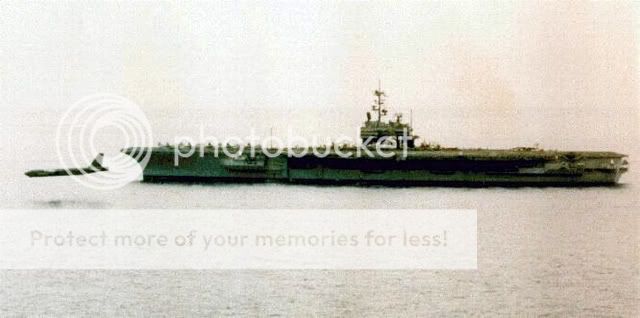It looks like you're using an Ad Blocker.
Please white-list or disable AboveTopSecret.com in your ad-blocking tool.
Thank you.
Some features of ATS will be disabled while you continue to use an ad-blocker.
share:
Originally posted by Ghost01
That looks like an early prototype for the RC-135 SIGINT fleet! I think you found one of the earily developmental aircraft without all the antannas.
Tim
it's the rc-135e Rivet Amber...the giant section infront of the wings is fiberglass and was put in to house an advanced radar...(i dont know the specific radar off the top of my head)....it was flying from south korea (i believe) to alaska when alaska recieved a message that was close to "we have strange vibrations, decending below 10k ft"...about an hour later there was static transmitted...and it dissappeared...no one ever found it...
they believe during turbulence the fiberglass vibrated apart from the rest of the aircraft...causing it to break into 3 pieces....
for the c-130...actaul video....
www.metacafe.com...
[edit on 7-7-2007 by wenfieldsecret]
Originally posted by Now_Then
Erm no. That is a Nimrod Nimrod if that is a quip about the things falling out of the sky lately then poor taste.
Problem is that they were refitted to take on air to air re-fueling for the faulklands war, now 20+ years on air to air refuling is part of their every day job, they are fantistic aircraft. But they are being pushed to do something they were not designed to do, their sucess will be their demise - don't fix wot ain't broke. But it is overdue for retirement from it's current role. BBC link
i did not mean to mention those recently lost in the middle east...i wouldnt poke fun at recon heroes.....when i met some british nimrod aircrew...they told me there were only three....
many aircraft round the world are due for retirement....but it'll take the big one to drop outta the sky for that to happen....
Originally posted by bucca220
C-130 on USS forrestal
www.aerospaceweb.org...
Thanks, that was it......AMAZING!
Originally posted by edsinger
Originally posted by Now_Then
This one deserves a mention, WestPoint23
posted it on this thread
Don't know any more about it other then he (she?) said its authentic and did not crash.
WOW! What is the story? I know it didn't take off.....did it?
I have heard of a C130 taking off the deck of a carrier, anyone got that picture?
Yhea its impressive aint it?
I don't know very much at all, it was posted in another thread where this photo was being discussed. (p.s. I very much doubt it took off or landed on the carrier - that would be impossable, but very funny to watch em trying )
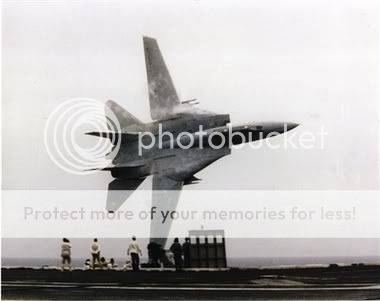
I suggested that it is perspective that makes it look so close, the wing span of the F14 is 64 feet, as opposed to the apparent 42ft which I came to by aproximating the guys height to 6ft and multiplying by 7.

That C130 landing on a carrier was wicked, the wing tip cleared the tower by 15ft!
Heres another from the same site.
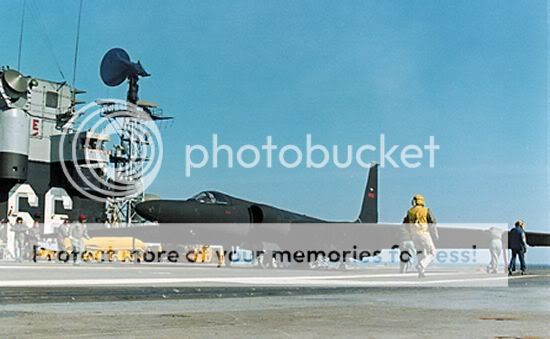
View of a U-2R aboard the USS America in 1969 Link
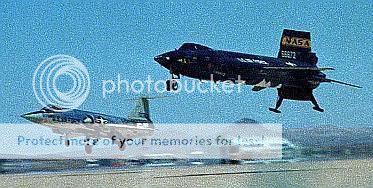
An X-15 and an F-104. I think the X-15 is still to this day the fastest and highest flying aircraft (4,520 mph (Mach 6.7) and 354,200 ft - over 67 miles) - but that seems to be unofficial.
Link
[edit on 8/7/2007 by Now_Then]
Heres another from the same site.

View of a U-2R aboard the USS America in 1969 Link

An X-15 and an F-104. I think the X-15 is still to this day the fastest and highest flying aircraft (4,520 mph (Mach 6.7) and 354,200 ft - over 67 miles) - but that seems to be unofficial.
Link
[edit on 8/7/2007 by Now_Then]
The shot of the B-52 and the carrier was originally posted a couple of months ago by Zaphod58 I believe. Story is that the USS Ranger? was in the med
and the shot was taken around 1990. Back in the 80's BUFF crews used used to practice on the deck penetration in order to sneak up on Soviet radar
pickets. They got quite good at skimming across the ocean at 50ft.
Anyway while on exercise the B-52 crew asked the Ranger if they would like them to perform a flyby, naturally the carrier replied yes. As they approched the B-52 told them to look down as they new the crew on deck would be looking through habit, up. What they saw next made there jaws drop as the Stratofortress had made it to within less than a mile or two before the Rangers crew spotted it. As you can see in the photo it was actually below the level of the flight deck. After completing the fly past they asked the carrier if they would like them to get up top more of the crew with their cameras and repeat it. Naturally they said YES! and the stunt was performed again.
I would love to see any of the shots of that taken by the deck crew.
LEE.
Anyway while on exercise the B-52 crew asked the Ranger if they would like them to perform a flyby, naturally the carrier replied yes. As they approched the B-52 told them to look down as they new the crew on deck would be looking through habit, up. What they saw next made there jaws drop as the Stratofortress had made it to within less than a mile or two before the Rangers crew spotted it. As you can see in the photo it was actually below the level of the flight deck. After completing the fly past they asked the carrier if they would like them to get up top more of the crew with their cameras and repeat it. Naturally they said YES! and the stunt was performed again.
I would love to see any of the shots of that taken by the deck crew.
LEE.
This short clip seems to be the last fly by, above the level of the deck.
 Another angle.
Another angle.
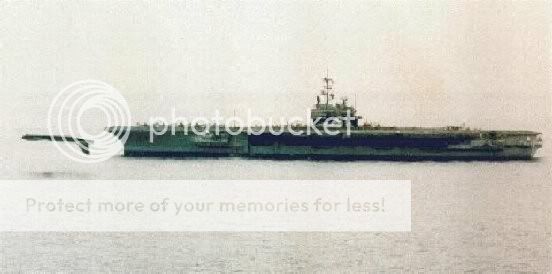
Something fishy bout this one.
[edit on 8/7/2007 by Now_Then]


Something fishy bout this one.
[edit on 8/7/2007 by Now_Then]
Awesome - would be neat if someone had a clip of the 'low' one.
Originally posted by neformore
One large chunk of Soviet Cold War nastiness
" target='_blank' class='tabOff'/>
Which has a lovely comment attributed to it
"an outstanding failure which revealed an embarassing lack of understanding of the problems of high-speed flight."
the picture wouldnt link me....
There is something odd about this dune - never mind get the beers out the cooler.

Hang on.

And you said I was daft to bring me metal detector and digger with us.

Ta Daaa!

Mig-25 (one forgetfull owner!)

Hang on.

And you said I was daft to bring me metal detector and digger with us.

Ta Daaa!

Mig-25 (one forgetfull owner!)
I've had another little trawl and I'm finding more pics than I know what to do with, here are four quite nice ones though to be going on with;
How many planes do you know that were (genuinely!) named after a Disney character?
The Supermarine Dumbo.
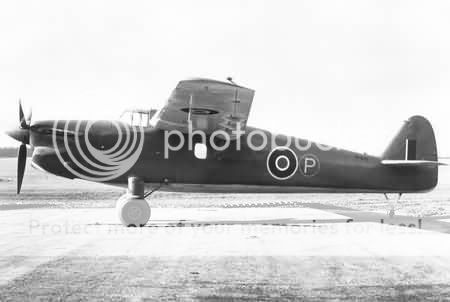
This is what a Spitfire looks like after exceeding mach 0.9 - yes, it landed like this.

Very scary landing scene, disaster was averted when the pilot applied full power to just clear the boundary fence;

This strange hybrid VTOL conversion of a Fairey Delta 2 was apparently created for a movie, nothing else known, can you help?

How many planes do you know that were (genuinely!) named after a Disney character?
The Supermarine Dumbo.

This is what a Spitfire looks like after exceeding mach 0.9 - yes, it landed like this.

Very scary landing scene, disaster was averted when the pilot applied full power to just clear the boundary fence;

This strange hybrid VTOL conversion of a Fairey Delta 2 was apparently created for a movie, nothing else known, can you help?

Waynos,
Not much info but it was made for a TV series and could, apparently, taxi with a small motorcycle engine I think I recall from somewhere. (God knows where).
Scott Furlong Predator
Not much info but it was made for a TV series and could, apparently, taxi with a small motorcycle engine I think I recall from somewhere. (God knows where).
Scott Furlong Predator
Originally posted by waynos
This is what a Spitfire looks like after exceeding mach 0.9 - yes, it landed like this.
This strange hybrid VTOL conversion of a Fairey Delta 2 was apparently created for a movie, nothing else known, can you help?
Nice pic of the spitfire, he wont be wearing that underware again will he!
The VTOL hybrid is the Scott-Furlong Predator. A wooden mock up tor the ITV series "The Plane Makers" - apparently. Pic taken at the static park, Biggin Hill air day 19th Sept 1964.
Built from ply wood it was fly be wire - thats to say a crane hoisted it up for filming it only had a 500cc motorcycle engine for taxiing.

Damn timeless beat me to it!
[edit on 10/7/2007 by Now_Then]
Thanks with the Predator information guys I have heard of the Planemakers, but it was before my time so I've never seen it.
It is very obviously influenced by the Dassault Mirage IIIV, which is kind of ironic given that the the Mirage itself was inspired by the Fairey Delta this is based on.
[edit on 10-7-2007 by waynos]
It is very obviously influenced by the Dassault Mirage IIIV, which is kind of ironic given that the the Mirage itself was inspired by the Fairey Delta this is based on.
[edit on 10-7-2007 by waynos]
waynos, that Spit that exceded M0.9 the picture is a little unclear but it appears to be missing a prop and the port wing has a ding in the leading
edge. Is that correct? my eyes are having trouble picking up anything else. Is there a story to go with this? If this is a "Captain obvious" moment
please embarass me.
LEE.
LEE.
There is indeed a story to that pic, here's what I wrote about it some time ago on another thread;
some opinions I put here may have since changed
some opinions I put here may have since changed
In RAE trials during 1943-46 various fighters were dived at full power from 40,000ft in what the test pilots desctibed as 'an attempt to break the world air speed record vertically downwards'
As part of these trials, once the terminal velocity was reached the guns were fired, and I quote, 'to see if the wings came off'. Nice work if you can get it!
It is recorded that in these trials the highest mach number ever recorded on a piston engined aircraft in flight was obtained when Sqn Leader A Martindale, in 1946, dived Spitfire XI 'EN409' to a speed of mach 0.92. However the photo below shows both what that speed did to the Spitfire and what a skillful pilot Sqn Ldr Martindale was! The propeller was ripped clean off and the fron end looks like its been repeatedly bashed with a lump hammer. And yet it appears to have landed perfectly.
external image
The account goes on to note that several other types were tested in this way, including the P-47 Thunderbolt and P-51 Mustang and none of them were able to reach the speed of the Spitfire because their high speed drag increased more rapidly. The major reason was in RJ Mitchells choice of a thin wing tapering to 9% thickness chord ratio, this was thinner than all other wings (even the P-51!) and against all aerodynamic advice of the time.
They alsdo found that NACA work oN laminar flow (NACA pioneered this work, not the RAE) was basically sound but that the promised advantages were not being obtained in practice. This was traced to surface roughness of the wing finish leading to skin friction which was cancelling out the benefits of laminar flow. This led to a change in the way the P-51 wing was manufactured and to the design of a laminar flow wing for the Spitfire, which led to the Spiteful.
new topics
-
Joe Rogan conspiracy (maybe)
ATS Skunk Works: 30 minutes ago -
Results of the use of the Oreshnik missile system in Dnepropetrovsk
World War Three: 2 hours ago -
Nigel Farage now the Most Favoured UK Politician
Regional Politics: 4 hours ago -
Little Johnny and Larry should team up
General Chit Chat: 10 hours ago -
Will Us use alien technology to fight in ww3?
World War Three: 11 hours ago
top topics
-
Results of the use of the Oreshnik missile system in Dnepropetrovsk
World War Three: 2 hours ago, 10 flags -
Little Johnny and Larry should team up
General Chit Chat: 10 hours ago, 8 flags -
Shane Gillis commercial
Jokes, Puns, & Pranks: 17 hours ago, 4 flags -
Will Us use alien technology to fight in ww3?
World War Three: 11 hours ago, 2 flags -
Nigel Farage now the Most Favoured UK Politician
Regional Politics: 4 hours ago, 2 flags -
Joe Rogan conspiracy (maybe)
ATS Skunk Works: 30 minutes ago, 0 flags
active topics
-
President-Elect DONALD TRUMP's 2nd-Term Administration Takes Shape.
Political Ideology • 238 • : WeMustCare -
Results of the use of the Oreshnik missile system in Dnepropetrovsk
World War Three • 69 • : Bluntone22 -
President-Elect TRUMP Picks Former Florida A.G. PAM BONDI to be U.S. Attorney General.
2024 Elections • 49 • : VariedcodeSole -
Will Us use alien technology to fight in ww3?
World War Three • 11 • : BeyondKnowledge3 -
A Mysterious Orb filmed over NYC by local news
Aliens and UFOs • 25 • : ArMaP -
The Popular Vote does not matter
Political Issues • 14 • : texas thinker -
Well we know Putins ICBMs won't fail in their silos
World War Three • 188 • : Xtrozero -
Joe Rogan conspiracy (maybe)
ATS Skunk Works • 0 • : AlroyFarms -
Shane Gillis commercial
Jokes, Puns, & Pranks • 2 • : Flyingclaydisk -
Little Johnny and Larry should team up
General Chit Chat • 2 • : texas thinker

